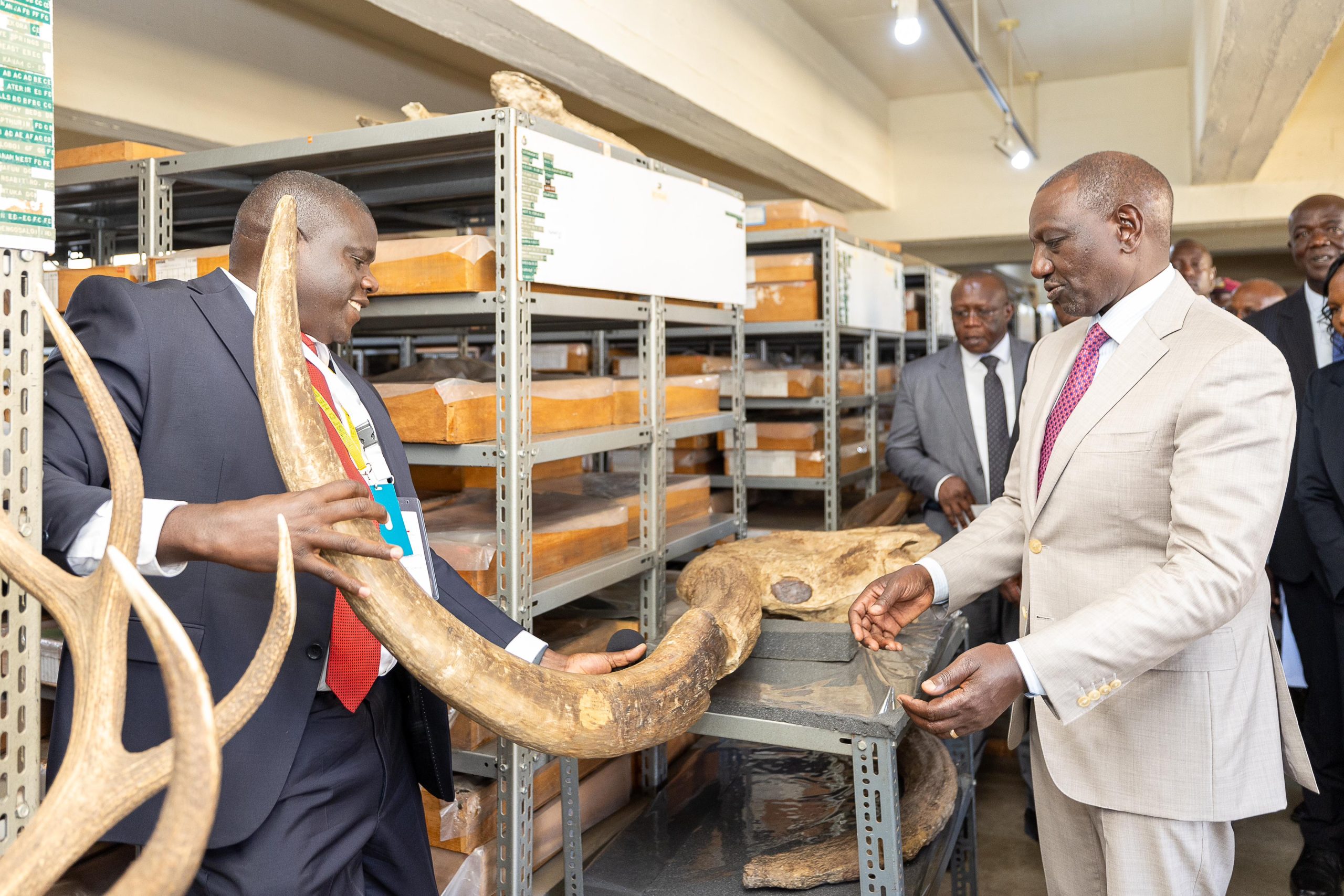
Ngomeni Shipwreck: Unearthing a 16th-Century Treasure
November 20, 2024
Turkana Boy: Kenya’s Eternal Ambassador
January 17, 2025The air buzzed with anticipation at the National Museums of Kenya headquarters. It was not just any day—it was a celebration of heritage, legacy, and an undeniable connection to the past. The grounds shimmered with an almost surreal energy. Men in black suits, their stoic faces betraying no emotion, patrolled the premises with precision, while sniffer dogs darted through corridors, their movements a reminder of the weight of the occasion. Amid the heightened security, a sense of pride and excitement permeated the air.
Amid this carefully orchestrated atmosphere, there was also beauty. Everyone—staff, dignitaries, and visitors alike—looked dazzling, draped in their finest. The pride of the day reflected not just in attire but in the gleaming eyes and confident smiles that illuminated every corner of the museum grounds.

The day began with a guided tour through the paleontology section, where the story of humanity unfolded in fossils. Dr. Emmanuel Ndiema, with his deep knowledge and infectious passion, guided the dignitaries through this journey, showcasing fossils that trace humanity’s evolutionary journey. It was a profound reminder of Kenya’s place as the true “Home of Human Origins,” a country that holds the keys to understanding humanity’s beginnings.

The tour moved to the vault, known as the “strong room.” Here, the dignitaries stood in awe of its design—a fortress capable of withstanding even the most destructive forces, including a bomb. This is where Turkana Boy, the pride of Kenya’s paleontological history, resides.
As I assisted Mr. Malaki with the exhibition showcasing Kenya’s eight UNESCO World Heritage Sites, I couldn’t help but feel a wave of pride. It was a privilege to play even a small role in this monumental day.
Then came the moment that seemed plucked out of a dream. I found myself standing face-to-face with His Excellency, President William Samoei Ruto. When he extended his hand, I shook it—a gesture that seemed simple yet carried the weight of a once-in-a-lifetime experience. Those fleeting minutes in the President’s orbit felt unreal, as if time had paused to allow me to savor the moment.

From the exhibitions, the guests were guided to the main tent, where they were welcomed with vibrant traditional dances. The lively performances set a celebratory tone as dignitaries took their seats for the official speeches.
The event featured a lineup of esteemed speakers, each adding depth and significance to the day. Leaders from various sectors took the stage, including MPs, the Director General of the National Museums of Kenya Prof. Mary Gikungu, and the PS Ms. Ummi Bashir, Representatives from UNESCO and the British High Commission also delivered thoughtful addresses, underscoring the importance of heritage conservation and international collaboration.
Kilifi County Governor Gideon Mung’aro expressed hope that Gedi’s UNESCO recognition would boost tourism and bring economic growth to the region.
The British High Commissioner, Neil Wigan, emphasized the enduring friendship and historical ties between Kenya and the United Kingdom. In a remarkable gesture of goodwill, he formally handed over a treasure trove of archival materials: 2,658 files and over 300,000 images from 1907 to 1968. These invaluable resources, which include intelligence reports, political summaries, and historical accounts, represent a commitment to preserving and sharing Kenya’s rich history.
To support Kenya’s efforts in digitizing these materials and ensuring accessibility for future generations, the British government also donated servers, laptops, and scanners. This act of generosity underscored the UK’s dedication to fostering collaboration and empowering Kenya to safeguard its heritage through modern technology. With these tools, Kenya will be able to properly and deeply understand its history and make it accessible to both local and international audiences.
President William Samoei Ruto’s speech carried both gravity and humor. Speaking with the insight of a scientist and the vision of a leader, he highlighted the underrepresentation of African sites on the UNESCO World Heritage list and questioned the fairness of the process, noting that Africa, with its 1.4 billion people and 54 countries, accounts for only 10% of the world’s UNESCO sites.
In a lighthearted moment, the President joked about how he might have been working at the museum had his path not led to politics. He shared memories of his university days with NMK Director General Dr. Mary Gikungu and pledged to improve the welfare of museum scientists. His promise of KES 1 billion to expand NMK facilities, including a new building at the Nairobi National Museum and upgrades at Uhuru Gardens, was met with applause.
The day ended with two symbolic acts: the cutting of the Turkana Boy anniversary cake and the presentation of a UNESCO certificate recognizing Gedi as a World Heritage Site. These moments perfectly encapsulated the spirit of the event—a celebration of Kenya’s past, a nod to its present, and a bold step toward its future.

As the first sitting President to visit the museum, President Ruto promised to return, stating that the experience was deeply personal. The event was not just a celebration of Gedi’s inscription but also a reaffirmation of Kenya’s commitment to its heritage, science, and future.
Author: Lilian Mwenda




